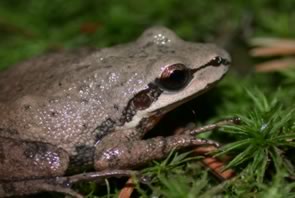
Pseudacris nigrita
Photo by JD Willson
Description: The southern chorus frog is tan or gray with a prominent dark brown stripe extending along each side of its body, from snout to groin. The back is patterned with three rows of dark spots, and the belly is usually white. A white line is present above the upper lip, and there is no triangular spot between the eyes.
Habitats and Habits: These frogs inhabit pine flatwoods, wet meadows, forested wetlands and wet roadside ditches in the Coastal Plain. Eggs are deposited in small clusters, attached to vegetation or other debris in shallow water. Tadpoles transform in about seven weeks.
Call: Southern chorus frogs call primarily from January through March. Their breeding call is a mechanical, rasping trill, which some say resembles the sound of a ratchet-type wrench.
Frog Fact: Southern chorus frogs, like other chorus frogs, are rather short-lived; very few individuals live more than two or three years.
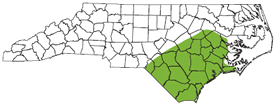
The shaded region represents the range of the southern chorus frog in North Carolina.
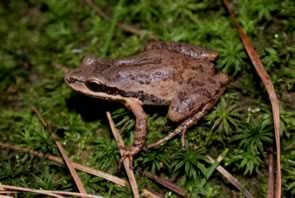
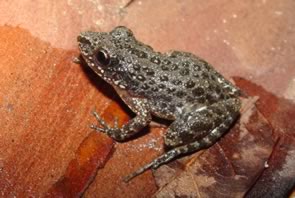

Photo by Aubrey M. Heupel
Photo by JD Willson
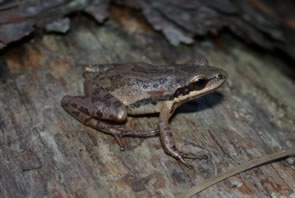
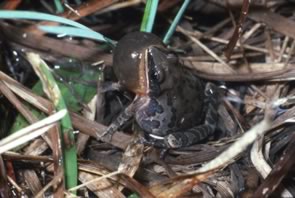
Photo by RW Van Devender
This website created by: Grant Connette and Evan Eskew.
For comments or questions contact M. Dorcas: midorcas@davidson.edu.
M. Dorcas homepage: http://bio.davidson.edu/dorcas
Davidson College, Davidson, North Carolina 28035-1719.
Text and maps from: Dorcas, M. E., S. J. Price, J. C Beane, and S. S. Cross. 2007. The Frogs and Toads of North Carolina. North Carolina Wildlife Resources Commission, Raleigh, NC. – Copyright by Michael E. Dorcas
Partial Funding for this website provided by a Associate Colleges of the South, National Science Foundation, and Duke Energy.
